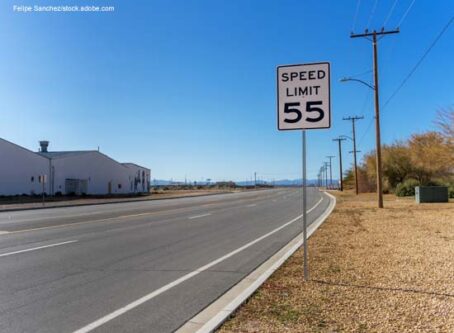EPA announces light-duty standards; heavy-duty expected soon
The U.S. Environmental Protection Agency on Wednesday, March 20 announced national tailpipe emission standards for passenger cars, light-duty trucks and medium-duty vehicles for model years 2027 through 2032.
Although the announcement focused on cars and light-duty vehicles, the EPA’s Phase 3 final rule on emission standards for heavy-duty vehicles recently passed review from the White House’s Office of Management and Budget. That means the final rule for heavy-duty vehicles should be published soon in the Federal Register.
Light- and medium-duty standards
Under the Clean Air Act, the EPA is establishing new, more protective tailpipe emission standards for criteria pollutants and greenhouse gases for light-duty vehicles and medium-duty vehicles that will phase-in over model years 2027 through 2032. In addition, the EPA is finalizing GHG program revisions in several areas, including off-cycle and air conditioning credits, the treatment of upstream emissions associated with zero-emission vehicles and plug-in hybrid electric vehicles in compliance calculations, medium-duty vehicle incentive multipliers, and vehicle certification and compliance.
The EPA also is establishing new standards to control refueling emissions from incomplete medium-duty vehicles, and battery durability and warranty requirements for light-duty and medium-duty electric and plug-in hybrid electric vehicles.
“With transportation as the largest source of U.S. climate emissions, these strongest-ever pollution standards for cars solidify America’s leadership in building a clean transportation future and creating good-paying American jobs, all while advancing President Biden’s historic climate agenda,” EPA Administrator Michael S. Regan said. “The standards will slash over 7 billion tons of climate pollution, improve air quality in overburdened communities and give drivers more clean-vehicle choices while saving them money.”
The final rule is scheduled to take effect 60 days after it is published in the Federal Register.
Heavy-duty proposal
In April, the EPA issued a proposed rule for setting the strictest truck tailpipe emission standards at the federal level.
The EPA’s proposed truck emission standards would require a quarter of new heavy trucks sold in the U.S. to be all-electric by 2032.
The upfront cost difference between an electric truck and an internal combustion engine truck is $582 for a short-haul daycab tractor. However, that price difference skyrockets to $14,712 for long-haul sleeper cab tractors.
The EPA proposed stronger carbon dioxide standards for model year 2027 heavy-duty vehicles that go beyond the current emission standards that apply under the HD Phase 2 Greenhouse Gas program. The agency also proposed an additional set of carbon dioxide standards for heavy-duty vehicles that would begin to apply in model year 2028, with progressively lower standards each model year through 2032. It is unclear whether the final rule will have significant changes when compared to April’s proposal.
Opposition
A new report released by the Clean Freight Coalition projects that full electrification of the U.S. commercial truck fleet would require nearly $1 trillion in infrastructure investment alone.
According to the report from Roland Berger, preparing the current commercial vehicle fleet for electrification would cost the trucking industry over $620 billion solely in utility and infrastructure expenses. This includes the installation of specialized chargers, electric service upgrades and facility enhancements. Additionally, utility companies would need to invest $370 billion to upgrade grid networks to meet the demands of just commercial vehicles. The study noted that the estimated $1 trillion expenditure does not account for the cost of new battery-electric trucks, which market research suggests can be two to three times more expensive than their diesel-powered counterparts.
“Electrification means focusing on the vehicle segments that are easier first,” said Dr. Wilfried Aulbur, senior partner at Roland Berger. “It means that we have to look at how fleets operate and potentially adjust. It means that we need better cooperation and planning across industries and governments, and it requires an openness to alternative technology paths to decarbonizing the heavy-duty segment. It also is clear that an industry with a yearly turnover of about $800 billion and a profit margin around 5% cannot invest $620 billion without financial support or a significant increase in freight rates.” LL









